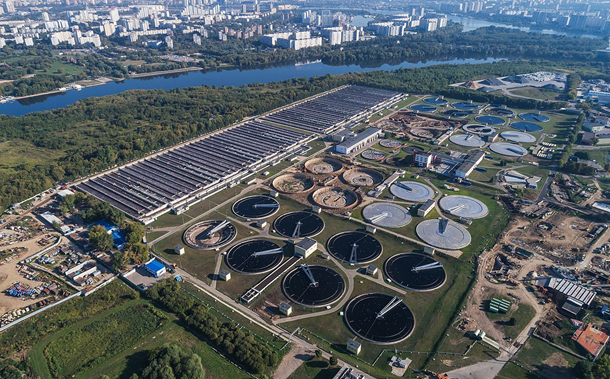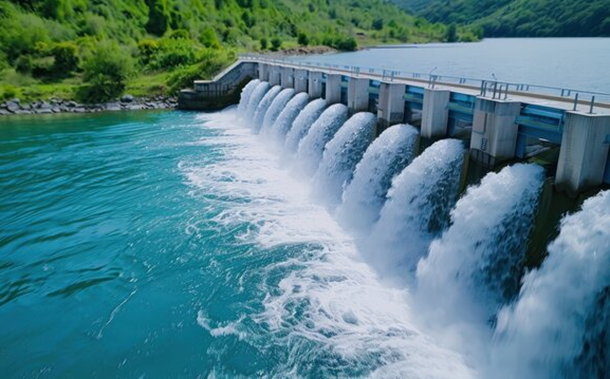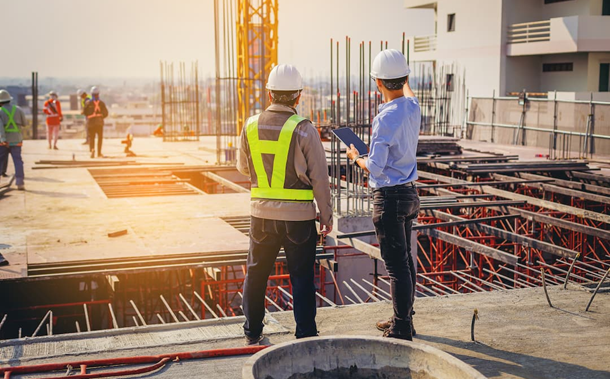Strength and Acid Resistance of Mortar with Different Binders from Palm Oil Fuel Ash, Slag, and Calcium Carbide Residue
Downloads
Doi:10.28991/CEJ-2024-010-07-08
Full Text:PDF
Downloads
[2] Pachana, P. K., Rattanasak, U., Jitsangiam, P., & Chindaprasirt, P. (2021). Alkali-activated material synthesized from palm oil fuel ash for Cu/Zn ion removal from aqueous solutions. Journal of Materials Research and Technology, 13, 440–448. doi:10.1016/j.jmrt.2021.04.065.
[3] Safiuddin, M., Salam, M. A., & Jumaat, M. Z. (2011). Utilization of palm oil fuel ash in concrete: A review. Journal of Civil Engineering and Management, 17(2), 234–247. doi:10.3846/13923730.2011.574450.
[4] Abdeldjouad, L., Dheyab, W., Gamil, Y., Asadi, A., & Shukla, S. K. (2023). Thermal curing effects on alkali-activated treated soils with palm oil fuel ash. Case Studies in Construction Materials, 19, 532–539. doi:10.1016/j.cscm.2023.e02455.
[5] Hawa, A., Salaemae, P., Abdulmatin, A., Ongwuttiwat, K., & Prachasearee, W. (2023). Properties of Palm Oil Ash Geopolymer Containing Alumina Powder and Field Para Rubber Latex. Civil Engineering Journal (Iran), 9(5), 1271–1288. doi:10.28991/CEJ-2023-09-05-017.
[6] Liu, M. Y. J., Chua, C. P., Alengaram, U. J., & Jumaat, M. Z. (2014). Utilization of palm oil fuel ash as binder in lightweight oil palm shell geopolymer concrete. Advances in Materials Science and Engineering, 2014, 610274. doi:10.1155/2014/610274.
[7] Runyut, D. A., Robert, S., Ismail, I., Ahmadi, R., & Abdul Samat, N. A. S. B. (2018). Microstructure and Mechanical Characterization of Alkali-Activated Palm Oil Fuel Ash. Journal of Materials in Civil Engineering, 30(7), 4018119. doi:10.1061/(asce)mt.1943-5533.0002303.
[8] Mahamat Ahmat, A., Johnson, U.A., Fazaulnizam Shamsudin, M., Mahmoud Alnahhal, A., Shazril Idris Ibrahim, M., Ibrahim, S., & Rashid, R.S.M. (2023). Assessment of sustainable eco-processed pozzolan (EPP) from palm oil industry as a fly ash replacement in geopolymer concrete. Construction and Building Materials, 387, 131424. doi:10.1016/j.conbuildmat.2023.131424.
[9] Najimi, M., Ghafoori, N., & Sharbaf, M. (2018). Alkali-activated natural pozzolan/slag mortars: A parametric study. Construction and Building Materials, 164, 625–643. doi:10.1016/j.conbuildmat.2017.12.222.
[10] Ahmad, J., Kontoleon, K. J., Majdi, A., Naqash, M. T., Deifalla, A. F., Ben Kahla, N., Isleem, H. F., & Qaidi, S. M. A. (2022). A Comprehensive Review on the Ground Granulated Blast Furnace Slag (GGBS) in Concrete Production. Sustainability (Switzerland), 14(14), 8783. doi:10.3390/su14148783.
[11] Özbay, E., Erdemir, M., & Durmuş, H. I. (2016). Utilization and efficiency of ground granulated blast furnace slag on concrete properties - A review. Construction and Building Materials, 105, 423–434. doi:10.1016/j.conbuildmat.2015.12.153.
[12] Blotevogel, S., Doussang, L., Poirier, M., André, L., Canizarès, A., Simon, P., ... & Cyr, M. (2024). The influence of Al2O3, CaO, MgO and TiO2 content on the early-age reactivity of GGBS in blended cements, alkali-activated materials and supersulfated cements. Cement and Concrete Research, 178, 107439. doi:10.1016/j.cemconres.2024.107439.
[13] Kumar, G., & Mishra, S. S. (2021). Effect of GGBFS on workability and strength of alkali-activated geopolymer concrete. Civil Engineering Journal (Iran), 7(6), 1036–1049. doi:10.28991/cej-2021-03091708.
[14] Sunarsih, E. S., As'ad, S., Sam, A. R. M., & Kristiawan, S. A. (2023). Properties of Fly Ash-Slag-Based Geopolymer Concrete with Low Molarity Sodium Hydroxide. Civil Engineering Journal (Iran), 9(2), 381–392. doi:10.28991/CEJ-2023-09-02-010.
[15] Tanu, H. M., & Unnikrishnan, S. (2023). Mechanical Strength and Microstructure of GGBS-SCBA based Geopolymer Concrete. Journal of Materials Research and Technology, 24, 7816–7831. doi:10.1016/j.jmrt.2023.05.051.
[16] Bawab, J., El-Dieb, A., El-Hassan, H., & Khatib, J. (2023). Effect of different activation techniques on the engineering properties of cement-free binder containing volcanic ash and calcium carbide residue. Construction and Building Materials, 408, 133734. doi:10.1016/j.conbuildmat.2023.133734.
[17] Abdulmatin, A., Khongpermgoson, P., Jaturapitakkul, C., & Tangchirapat, W. (2018). Use of Eco-Friendly Cementing Material in Concrete Made from Bottom Ash and Calcium Carbide Residue. Arabian Journal for Science and Engineering, 43(4), 1617–1626. doi:10.1007/s13369-017-2685-x.
[18] Rattanashotinunt, C., Tangchirapat, W., Jaturapitakkul, C., Cheewaket, T., & Chindaprasirt, P. (2018). Investigation on the strength, chloride migration, and water permeability of eco-friendly concretes from industrial by-product materials. Journal of Cleaner Production, 172, 1691–1698. doi:10.1016/j.jclepro.2017.12.044.
[19] Dueramae, S., Tangchirapat, W., Chindaprasirt, P., & Jaturapitakkul, C. (2017). Influence of Activation Methods on Strength and Chloride Resistance of Concrete Using Calcium Carbide Residue–Fly Ash Mixture as a New Binder. Journal of Materials in Civil Engineering, 29(4), 4016265. doi:10.1061/(asce)mt.1943-5533.0001808.
[20] Dueramae, S., Tangchirapat, W., Sukontasukkul, P., Chindaprasirt, P., & Jaturapitakkul, C. (2019). Investigation of compressive strength and microstructures of activated cement free binder from fly ash-calcium carbide residue mixture. Journal of Materials Research and Technology, 8(5), 4757–4765. doi:10.1016/j.jmrt.2019.08.022.
[21] Hanjitsuwan, S., Phoo-ngernkham, T., & Damrongwiriyanupap, N. (2017). Comparative study using Portland cement and calcium carbide residue as a promoter in bottom ash geopolymer mortar. Construction and Building Materials, 133, 128–134. doi:10.1016/j.conbuildmat.2016.12.046.
[22] Suttiprapa, P., Tangchirapat, W., Jaturapitakkul, C., Rattanasak, U., & Jitsangiam, P. (2021). Strength behavior and autogenous shrinkage of alkali-activated mortar made from low-calcium fly ash and calcium carbide residue mixture. Construction and Building Materials, 312, 125438. doi:10.1016/j.conbuildmat.2021.125438.
[23] Li, Z., & Ikeda, K. (2023). Influencing Factors of Sulfuric Acid Resistance of Ca-Rich Alkali-Activated Materials. Materials, 16(6), 2473. doi:10.3390/ma16062473.
[24] Jeon, I. K., Qudoos, A., Jakhrani, S. H., Kim, H. G., & Ryou, J. S. (2020). Investigation of sulfuric acid attack upon cement mortars containing silicon carbide powder. Powder Technology, 359, 181–189. doi:10.1016/j.powtec.2019.10.026.
[25] Aliques-Granero, J., Tognonvi, T. M., & Tagnit-Hamou, A. (2017). Durability test methods and their application to AAMs: case of sulfuric-acid resistance. Materials and Structures/Materiaux et Constructions, 50(1), 1–14. doi:10.1617/s11527-016-0904-7.
[26] ASTMC989/C989-22. (2024). Standard Specification for Slag Cement for Use in Concrete and Mortars. ASTM International, Pennsylvania, United States. doi:10.1520/C0989_C0989M-22.
[27] Chang, J. J. (2003). A study on the setting characteristics of sodium silicate-activated slag pastes. Cement and Concrete Research, 33(7), 1005–1011. doi:10.1016/S0008-8846(02)01096-7.
[28] Horpibulsuk, S., Phetchuay, C., Chinkulkijniwat, A., & Cholaphatsorn, A. (2013). Strength development in silty clay stabilized with calcium carbide residue and fly ash. Soils and Foundations, 53(4), 477–486. doi:10.1016/j.sandf.2013.06.001.
[29] Kampala, A., Horpibulsuk, S., Chinkullijniwat, A., & Shen, S. L. (2013). Engineering properties of recycled Calcium Carbide Residue stabilized clay as fill and pavement materials. Construction and Building Materials, 46, 203–210. doi:10.1016/j.conbuildmat.2013.04.037.
[30] Somna, K., Jaturapitakkul, C., & Kajitvichyanukul, P. (2011). Microstructure of Calcium Carbide Residue–Ground Fly Ash Paste. Journal of Materials in Civil Engineering, 23(3), 298–304. doi:10.1061/(asce)mt.1943-5533.0000167.
[31] ASTM C109/C109M-20. (2020). Standard Test Method for Compressive Strength of Hydraulic Cement Mortars (Using 2-in. or [50-mm] Cube Specimens). ASTM International, Pennsylvania, United States. doi:10.1520/C0109_C0109M-20.
[32] Dueramae, S., Sanboonsiri, S., Suntadyon, T., Aoudta, B., Tangchirapat, W., Jongpradist, P., Pulngern, T., Jitsangiam, P., & Jaturapitakkul, C. (2021). Properties of lightweight alkali activated controlled Low-Strength material using calcium carbide residue – Fly ash mixture and containing EPS beads. Construction and Building Materials, 297, 123769. doi:10.1016/j.conbuildmat.2021.123769.
[33] Norrarat, P., Tangchirapat, W., Songpiriyakij, S., & Jaturapitakkul, C. (2019). Evaluation of Strengths from Cement Hydration and Slag Reaction of Mortars Containing High Volume of Ground River Sand and GGBF Slag. Advances in Civil Engineering, 2019, 4892015. doi:10.1155/2019/4892015.
[34] Castellano, C. C., Bonavetti, V. L., Donza, H. A., & Irassar, E. F. (2016). The effect of w/b and temperature on the hydration and strength of blastfurnace slag cements. Construction and Building Materials, 111, 679–688. doi:10.1016/j.conbuildmat.2015.11.001.
[35] Rattanasak, U., & Chindaprasirt, P. (2009). Influence of NaOH solution on the synthesis of fly ash geopolymer. Minerals Engineering, 22(12), 1073–1078. doi:10.1016/j.mineng.2009.03.022.
[36] Memon, F. A., Nuruddin, M. F., Khan, S., Shafiq, N., & Ayub, T. (2013). Effect of sodium hydroxide concentration on fresh properties and compressive strength of self-compacting geopolymer concrete. Journal of Engineering Science and Technology, 8(1), 44–56.
[37] Lee, W. K. W., & Van Deventer, J. S. J. (2002). The effects of inorganic salt contamination on the strength and durability of geopolymers. Colloids and Surfaces A: Physicochemical and Engineering Aspects, 211(2–3), 115–126. doi:10.1016/S0927-7757(02)00239-X.
[38] Alonso, S., & Palomo, A. (2001). Alkaline activation of metakaolin and calcium hydroxide mixtures: Influence of temperature, activator concentration and solids ratio. Materials Letters, 47(1–2), 55–62. doi:10.1016/S0167-577X(00)00212-3.
[39] Dueramae, S., Tangchirapat, W., & Jaturapitakkul, C. (2018). Strength and heat generation of concrete using carbide lime and fly ash as a new cementitious material without Portland cement. Advanced Powder Technology, 29(3), 672–681. doi:10.1016/j.apt.2017.12.007.
[40] Sata, V., Sathonsaowaphak, A., & Chindaprasirt, P. (2012). Resistance of lignite bottom ash geopolymer mortar to sulfate and sulfuric acid attack. Cement and Concrete Composites, 34(5), 700–708. doi:10.1016/j.cemconcomp.2012.01.010.
[41] Teymouri, M., Behfarnia, K., Shabani, A., & Saadatian, A. (2022). The Effect of Mixture Proportion on the Performance of Alkali-Activated Slag Concrete Subjected to Sulfuric Acid Attack. Materials, 15(19), 6754. doi:10.3390/ma15196754.
[42] Yusuf, M. O., Megat Johari, M. A., Ahmad, Z. A., & Maslehuddin, M. (2015). Evaluation of Slag-Blended Alkaline-Activated Palm Oil Fuel Ash Mortar Exposed to the Sulfuric Acid Environment. Journal of Materials in Civil Engineering, 27(12), 4015058. doi:10.1061/(asce)mt.1943-5533.0001315.
[43] Bakharev, T. (2005). Resistance of geopolymer materials to acid attack. Cement and Concrete Research, 35(4), 658–670. doi:10.1016/j.cemconres.2004.06.005.
[44] Allahverdi, A., & Skvara, F. (2006). Sulfuric acid attack on hardened paste of geopolymer cements-part 2. Corrosion mechanism at mild and relatively low concentrations. Ceramics Silikaty, 50(1), 1.
[45] Gijbels, K., Pontikes, Y., Samyn, P., Schreurs, S., & Schroeyers, W. (2020). Effect of NaOH content on hydration, mineralogy, porosity and strength in alkali/sulfate-activated binders from ground granulated blast furnace slag and phosphogypsum. Cement and Concrete Research, 132, 106054. doi:10.1016/j.cemconres.2020.106054.
[46] Fu, Q., Bu, M., Zhang, Z., Xu, W., Yuan, Q., & Niu, D. (2023). Hydration Characteristics and Microstructure of Alkali-Activated Slag Concrete: A Review. Engineering, 20, 162–179. doi:10.1016/j.eng.2021.07.026.
[47] Khater, H. M. (2012). Effect of Calcium on Geopolymerization of Aluminosilicate Wastes. Journal of Materials in Civil Engineering, 24(1), 92–101. doi:10.1061/(asce)mt.1943-5533.0000352.
[48] Walkley, B., San Nicolas, R., Sani, M. A., Rees, G. J., Hanna, J. V., van Deventer, J. S. J., & Provis, J. L. (2016). Phase evolution of C-(N)-A-S-H/N-A-S-H gel blends investigated via alkali-activation of synthetic calcium aluminosilicate precursors. Cement and Concrete Research, 89, 120–135. doi:10.1016/j.cemconres.2016.08.010.
[49] Liu, Q., Zhang, J., Su, Y., & Lü, X. (2021). Variation in Polymerization Degree of C-A-S-H Gels and Its Role in Strength Development of Alkali-activated Slag Binders. Journal of Wuhan University of Technology, Materials Science Edition, 36(6), 871–879. doi:10.1007/s11595-021-2281-z.
[50] Huang, Z., Zhou, Y., & Cui, Y. (2021). Effect of Different NaOH Solution Concentrations on Mechanical Properties and Microstructure of Alkali-Activated Blast Furnace Ferronickel Slag. Crystals, 11(11), 1301. doi:10.3390/cryst11111301.
[51] Irshidat, M. R., Al-Nuaimi, N., & Rabie, M. (2021). Sustainable utilization of waste carbon black in alkali-activated mortar production. Case Studies in Construction Materials, 15, 743. doi:10.1016/j.cscm.2021.e00743.
[52] Zhang, H. Y., Kodur, V., Wu, B., Cao, L., & Qi, S. L. (2016). Comparative Thermal and Mechanical Performance of Geopolymers derived from Metakaolin and Fly Ash. Journal of Materials in Civil Engineering, 28(2), 4015092. doi:10.1061/(asce)mt.1943-5533.0001359.
[53] Tai, Z. S., Hubadillah, S. K., Othman, M. H. D., Dzahir, M. I. H. M., Koo, K. N., Tendot, N. I. S. T. I., Ismail, A. F., Rahman, M. A., Jaafar, J., & Aziz, M. H. A. (2019). Influence of pre-treatment temperature of palm oil fuel ash on the properties and performance of green ceramic hollow fiber membranes towards oil/water separation application. Separation and Purification Technology, 222, 264–277. doi:10.1016/j.seppur.2019.04.046.
[54] Haha, M. Ben, Lothenbach, B., Le Saout, G., & Winnefeld, F. (2012). Influence of slag chemistry on the hydration of alkali-activated blast-furnace slag - Part II: Effect of Al2O3. Cement and Concrete Research, 42(1), 74–83. doi:10.1016/j.cemconres.2011.08.005.
[55] El-Jazairi, B., & Illston, J. M. (1977). A simultaneous semi-isothermal method of thermogravimetry and derivative thermogravimetry, and its application to cement pastes. Cement and Concrete Research, 7(3), 247–257. doi:10.1016/0008-8846(77)90086-2.
[56] Men, S., Tangchirapat, W., Jaturapitakkul, C., & Ban, C. C. (2022). Strength, fluid transport and microstructure of high-strength concrete incorporating high-volume ground palm oil fuel ash blended with fly ash and limestone powder. Journal of Building Engineering, 56, 104714. doi:10.1016/j.jobe.2022.104714.
[57] Kulasuriya, C., Dias, W. P. S., Vimonsatit, V., & De Silva, P. (2020). Mechanical and Microstructural Properties of Alkali Pozzolan Cement (APC). International Journal of Civil Engineering, 18(11), 1281–1292. doi:10.1007/s40999-020-00534-3.
[58] Guo, W., Zhang, Z., Bai, Y., Zhao, G., Sang, Z., & Zhao, Q. (2021). Development and characterization of a new multi-strength level binder system using soda residue-carbide slag as composite activator. Construction and Building Materials, 291, 123367. doi:10.1016/j.conbuildmat.2021.123367.
[59] Chen, K., Lin, W. T., & Liu, W. (2021). Effect of NaOH concentration on properties and microstructure of a novel reactive ultra-fine fly ash geopolymer. Advanced Powder Technology, 32(8), 2929–2939. doi:10.1016/j.apt.2021.06.008.
- Authors retain all copyrights. It is noticeable that authors will not be forced to sign any copyright transfer agreements.
- This work (including HTML and PDF Files) is licensed under a Creative Commons Attribution 4.0 International License.![]()














